Cancer Chemotherapy Pharmacology – Flashcards
Unlock all answers in this set
Unlock answersquestion
Types systemic Therapy
answer
-Chemotherapy -Anti-hormonal therapy -Immunotherapy -Targeted therapy -Radiotherapy: Targeted isotopes
question
Chemotherapy (Goals)
answer
1.) To cure malignancies: -Childhood ALL -NHL -Hodgkin's disease -Testicular cancer 2. to improve cure rates (adjuvant therapy): -Breast cancer -Colon cancer -Lung cancer -Bladder cancer 3. to spare organ function (along with radiation): -Larynx cancer -Lung cancer -Anal cancer 4. To extend life (not necessarily cure): -CML 5. to palliate symptoms (Less unpleasant): -Most malignancies
question
Chemotherapy (Principles)
answer
1.) *Principle of log kill* -A clinically detectable tumor has a mass of approximately 1 gram= 1,000,000,000 cells (possibly less) -1+ kg tumor is usually lethal -In theory effectively dosed chemo kills a CONSTANT FRACTION of cancer cells -Subsequent doses kill a similar fraction of remaining cancer cells -1st order kinetics 2.) *Death of residual cancer cells requires other mechanisms* -Possibly immunologic -Possibly apoptosis: Programmed cell death 3.) *Absolute cancer irradication by chemotherapy may NOT occur* -Extremely late recurrences of chemotherapy treated cancers seen -Ex.) Hodgkin's Disease, breast cancer, etc.
question
Chemotherapy (Cycling)
answer
Chemotherapy is most ACTIVE if cells are replicating= *CYCLING* -Most tumors actually have a SMALL percentage of cells CYCLING >Prostate Cancer: 1-3% (low cycling) >Breast Cancer: 1-10% >Colon Cancer: 2-5% >Lymphoma: 10-25% >Leukemia: 50-90% (high cycling)
question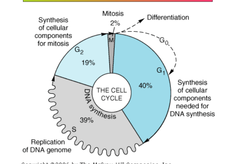
Control of Cell Cycle

answer
-From Go (resting) cell enters G1 -Most active phase is G1 then S >Several drugs act at these highly active stages (G1 and S) >If drug acts only on G1: it's considered *cell cycle specific* ;If drug acts on several stages, then it is considered *non-specific* -Few act on G0, G2, and M phases
question
Cell cycle specific vs cell cycle non-specific
answer
Certain types of chemotherapeutic agents require cells to be *cycling to be active* -CELL CYCLE SPECIFIC-; Anti-metabolites (Methotrexate, etc) Other types of chemo are active INDEPENDENT of whether cells are cycling or not (although MORE active if cycling)-; direct DNA damage - CELL CYCLE NON-SPECIFIC-; Alkylators (analogous to radiation therapy)
question
Cell Cycle and CDKs
answer
Each transition in the cell cycle is controlled by *cyclin dependent kinases (CDK's)*-> activated by corresponding regulating proteins called *cyclins* -INHIBITED by proteins such as *p16* ( 16-kilodalton) from multiple tumor suppressor gene: *1(MTS-1)* -Mutation or loss of p16 (from chromosome 9) can result in relentless proliferation of cancer cells-> *Retinoblastoma* -In contrast good prognosis HPV associated head and neck cancers OVEREXPRESS p16.
question
Cells with damaged DNA undergo apoptosis via...
answer
Cells with DAMAGED DNA usually undergo apoptosis which is controlled to a degree by normal *p53 protein* (53 - kilodalton). -Mutation or loss of p53 (from chromosome 17) activity can also lead to uncontrolled tumor growth-> *Li-Fraumeni syndrome*
question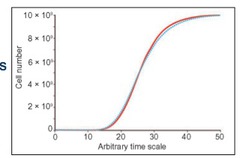
Gompertzian growth

answer
-As tumors grow their growth fraction (GF) may DECREASE due to factors such as HYPOXIC conditions -Conversely as tumors shrink their growth fraction may INCREASE making them more susceptible to chemotherapy= more cycling cells -Small tumors more responsive to chemo -Large tumors less responsive -Harder to kill with more time and cells have reached peak number-> dividing less
question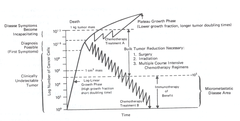
Gompertz tumor growth curve

answer
At one point of mass growth: there is LACK of blood supply to the center-> size of the mass DECREASES -Until a certain point, during log phase, cancer cannot be detected -If cannot be identified early on: Can be wiped out with Ab Irradiation or chemo
question
P16 and Rb
answer
-p16 is from chromosome 9 -Rb gene is from chromosome 13 -p16 decelerates progression from G1 to S-phase >INHIBITS cyclin dependent kinase 4 and 6 (CDK 4 and 6) preventing phosphorylation of Rb protein=PREVENTING progression from G1 to S
question
Alkylating Agent
answer
Alkane: An open chain hydrocarbon containing primarily carbon to carbon or carbon to hydrogen single bonds Alkyl group: An alkane missing one hydrogen -typically part of a larger molecule -Very reactive: unpaired electron=*electrophilic* -Forms ADDUCTS with nucleophilic molecules *Cell Cycle NON Specific*
question
Nitrogen Mustards

answer
bis(chloroethyl)amines *Specificity for N7 position of guanine* -When chlorine leaves-> mustard becomes very ACTIVE and binds to DNA Ex.) -Mechlorethamine -Cyclophosphamide -Melphalan -Chlorambucil
question
Alkylators (Common Properties)
answer
1.) Act through covalent bonding of alkyl group(s) to intracellular macromolecules: -Generate HIGHLY reactive positively charged intermediates -Combine with electron-rich "*nucleophilic*" groups such as amino, phosphate, sulfhydryl, or hydroxyl moieties -May contain one or two functional groups (monofunctional or bifunctional) . 2.) Alkylation of DNA bases appears to be major cause of lethal toxicity to cancer cells: *N7 position of guanine* 3.) Monofunctional: SINGLE strand breaks 4.) Bifunctional: Cross linking 5.) *Toxicity worse in cells deficient in DNA repair enzymes* Ex.) *Ataxia telangiectasia syndrome* 6. *Secondary malignancies* such as *AML* is most COMMON due to DNA damage WITHOUT cell death
question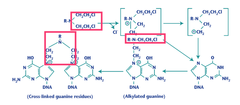
Alkylation of DNA guanine (Mechanism)

answer
Alkylation of DNA guanine (N7)= Alkylated purine -When two alkylations occur from same alkylator= cross linking of DNA strands -Breaks in DNA-> no longer divide *Nitrogen mustards form reactive ethyleneimmonium and carbonium ions-> attack nucleophilic groups especially the N-7 position of guanine*
question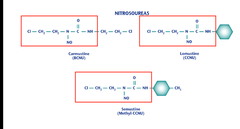
Nitrosoureas Alkylators

answer
-A class of alkylating-like agents that include both a *nitroso group (R-NO) and a urea* -Not classic alkylators but work similarly -Covalently bind with nucleic acids -Cause cross linking -FAT soluble: Can cross Blood Brain Barrier -*PROLONGED bone marrow suppression* Ex.) Carbmustine,Lomustine, and Semustine (-mustine)
question
Other Alkylators
answer
-Busulfan: Was used for CML, but caused pulmonary toxicity-> Imatinib/Gleevec has taken over -Procarbazine (Mutalane) -Dacarbazine (DTIC) -Temozolamide -Don't look like typical alkylators but all have a REACTIVE intermediate that has alkylating function Ex.) Unpaired electron
question
Procarbazine

answer
*Mutalane* -Used for Hodgkin's Disease and brain tumor Mustard that has *Antabuse (disulfiram)* effect when used with alcohol >Inhibits ADH-> Acetaldehyde stays longer in body-> toxic -Hydrazine derivative: coupling of pair of ammonia molecules by removal of one hydrogen per molecule *Antabuse effect*
question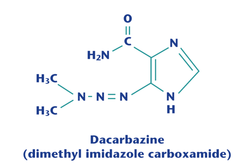
DTIC

answer
*Dacarbazine* -Active in Rx of *metastatic melanoma* (so is Ipilimumab and Vumrafenib) -Being replaced by bRAF inhibitors and mAbs. -Triazine derivative: Aromatic ring with 3 nitrogen atoms
question
Temozolomide
answer
*Crosses BBB* -Improves survival in *gliomas* when used in combination with RADIATION therapy -Oral prodrug similar to DTIC -Tetrazine derivative: aromatic ring with 4 hydrogen atoms *Most useful in reaction of GLIOMAS*
question
Alkylators (Resistance)
answer
-DECREASED intracellular accumulation of drug: Amplification of gene responsible for *trans membrane efflux* (possibly MDR gene) -Increased intracellular thiol (Ex: *Glutathione*) concentration via gene amplification >A thiol is an organosulfur compound that can neutralize alkylation -*Change in DNA repair enzymes: Gene amplification >Amount of enzyme or efficiency (mutation)*
question
Mechlorethamine
answer
*Nitrogen Mustard* -Hodgkin's Disease treatment -Extreme vesicant: Blistering low yield
question
Chlorambucil
answer
*Nitrogen Mustard* -Well absorbed for oral use -Active in SLOWLY progressive malignancies Ex.) Low grade lymphomas and CLL
question
Melphalan
answer
*Nitrogen Mustard* -Useful in multiple myeloma -Used in high dose bone marrow transplant protocols -Some activity in breast and ovarian cancer
question
Bendamustine
answer
Despite -mustine ending, it is a *Nitrogen Mustard* -CLL -Low grade lymphoma -Similar to Chlorambucil
question
Cyclophosphamide
answer
*Nitrogen Mustard* -WELL absorbed orally -WIDEST clinical usage -ACTIVE intermediate= Phosphoramide mustard -Main toxicity is *myelosuppression* -Useful in breast cancers, lymphomas, and leukemias -Helps with side effect of hemorrhagic cystitis (use MESNA) due to acrolein production
question
Ifosfamide
answer
*Nitrogen Mustard* -Useful in testicular cancer, sarcomas, and lung cancer -Toxicity of acrolein (an extremely toxic intermediary, particularly to the bladder mucosa) can be modified with MESNA (helps with side effect of hemorrhagic cystitis) -Acrolein also produced by burning fat
question
MESNA
answer
*2-Mercapto Ethane Sulfonate sodium(NA)* -Supplies free thiol group which binds to and INACTIVATES *acrolein*, the urotoxic metabolite of ifosfamide and cyclophosphamide ;mercapto: A thiol that binds strongly to mercury
question
Nitrosoureas
answer
*Carmustine, lomustine, semustine* -Fat soluble -Cross blood brain barrier -PROLONGED myelosuppression (bone marrow suppression) -Most common uses: ;Melanoma ;Brain tumors -NOT include Bendamustine (nitrogen mustard despite name) -*Streptozocin*: Role in islet cell tumors
question
Alkylator Toxicity
answer
Bone marrow suppression -Usually occurs 7-10 days post Rx -Recovery usually takes 7-10 days -Occurrence and recovery more *PROLONGED with nitrosoureas* -Stem cell can get damaged-; decreased WBCs-; Infections Vesicant (blistering) properties -May be severe and prolonged -Nitrogen mustard worse than cyclophosphamide *Hemorhagic cystitis due to ACROLEIN* -MOST commonly seen with *cyclophosphamide and ifosfamide* BUT PREVENTED with prophylactic use of *MESNA*, forced *hydration and diuresis*, and particular attention to urinary obstruction (ex.) enlarged prostate) Secondary malignancies -Caused by sub-lethal DNA damage (*AML*)
question
Alkyl Agents (Overall)
answer
1.) Alkyl group is REACTIVE intermediate of all alkylating agents 2.) Cell cycle NON-specific: Sometimes called radiomimetic 3.) Most are vesicants (or at least irritants) when used IV 4.) Broad range of use particularly H.D., non-hodgkin's lymphoma, and breast cancer 5.) Myelosuppression (BM suppression) is most common dose-limiting toxicity 6. Secondary malignancies can occur particularly *AML*
question
Anti-metabolites
answer
*Cell Cycle SPECIFIC* A molecule bearing a *close structural resemblance* to a molecule required for normal physiologic functioning, and exerting its effect by INTERFERING with the utilization of this essential molecule. -The use of the term in chemotherapy usually implies INHIBITION of the synthesis of DNA, RNA, or protein.
question
Anti-metabolites: Common properties
answer
-*Most active during DNA synthesis= cell cycle SPECIFIC* -INHIBIT DNA, RNA, and protein synthesis -First family of RATIONALLY designed chemotherapy agents -Mainly substrates for VITAL enzymes
question
Anti-metabolite Families
answer
1.) Anti-folate= *Methotrexate* 2.) Pyrimidine analogues= *5-FU and ARA-C* 3.) Purine analogues= *6-MP and 5-TG* 4.) Urea analogues-> *Hydroxyurea*
question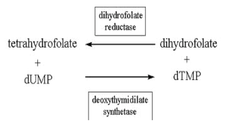
Folate action in DNA synthesis

answer
Folate is needed with conversion of dUMP to dTMP via Thymidylate Synthase -MTX will inhibit dUMP to dTMP
question
Methotrexate (Mechanism)

answer
*Anti-Folate: Amethopterin* 1.) *Thymidylate synthetase* requires reduced (tetrahydro) folate to convert uridine monophosphate(UMP) to thymidine monophosphate(TMP) with dihyrofolate as byproduct. >TMP required for DNA synthesis 2.) DHFR (dihydrofolate reductase) required to convert dihydrofolate back to tetrahydrofolate (THF) -Main source of reduced folate for DNA synthesis 3.) *methotrexate* is similar (analog) to dihydrofolate and competes with dihyrofolate for access to DHFR
question
MTX (Pharmokinetics)
answer
*Anti-Folate: Amethopterin* -Drug active WITHOUT metabolization -Depends on renal clearance -Solubility properties >MORE soluble at alkaline pH >MTX precipitates at pH close to 5 (don't want this to happen!) -;Should alkalinize the pH with bicarbonate (ginger ale, etc) -Doesn't cross BBB
question
Methotrexate (Resistance)
answer
-*Often more ACTIVE if polyglutamated* >Cancer cells may not be able to polyglutamate intracellularly -INCREASED production of DHFR via gene amplification= Drug can't block them all -DECREASED affinity of DHFR for MTX due to MUTATION
question
Polyglutamation
answer
-Addition of glutamic acid residues INTRACELLULARLY to methotrexate -DECREASES cellular efflux of polyglutamated drug ;Polyglutamation INCREASES effect of methotrexate by keeping drug *intracellularly* -INCREASES drug activity -*Cells that can't polyglutamate are relatively resistant to effect of MTX* >Cancer cells can be either inheritantly poor polyglutamators or acquire this trait leading to resistance -Cancer cell mutation can DECREASE polyglutamation
question
Methotrexate (Clinical uses)
answer
-Choriocarcinoma -ALL -NHL -Cutaneous T-cell lymphoma -Lung cancer -Breast cancer -Intrathecal chemotherapy >Give in CSF via lumbar puncture or tube to ventricles (reservoir)
question
Intrathecal Methotrexate
answer
Methotrexate *does not pass BBB* -Can be given intrathecally or intraventricularly to attain *high CNS concentrations with minimal systemic toxicity*
question
Methotrexate (Toxicity)
answer
-*Bone marrow suppression* -Skin rashes -Mucositis -Hepatotoxicity: More important with chronic conditions such as Psoriasis -Pulmonary toxicity
question
Methotrexate (3rd spacing)
answer
Methotrexate collects in pleural effusions and ascitic fluid (can cause pulmonary toxicity and hepatotoxicity) -Subsequent SLOW release of drug mimicking a slow infusion with increased bone marrow and mucosal toxicity >Unpredictable >Goes systemically
question
Leucovorin (folinic acid) Rescue
answer
*Helpful with use of high dose methotrexate* 1.) Cancer cells in general have higher GF than non-cancer cell population 2. effect of methotrexate more rapid with higher GF cell population (i.e. cycling cells/cancer) 3. May rescue lower GF cell population (i.e. non-cancerous tissue) with EXCESS reduced folate (given after methotrexate) 4.Dangerous and timing is critical *Leucovorin will help with preventing toxic effects of methotrexate to normal tissues*
question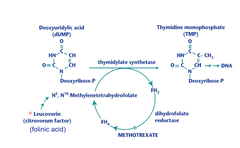
Leucovorin Mechanism

answer
ONLY give when using HIGH DOSE methotrexate
question
Other antifolate drugs
answer
Pemetrexed (Alimta) -multiple targets >Lesothelioma >Lung cancer Raltitrexed (Tomudex) >Colorectal cancer >Breast cancer General
question
Pyrimidines and Purines
answer
Pyrimidines (CUT): -Uracil (U): RNA only >5-methyl uracil -Thymine (T) -Cytosine (C) Purines (GA): -Guanine (G) -Adenine (A) -Nucleoside is a nucleobase linked to a pentose sugar -Nucleotide is a nucleoside with one or more phosphate groups
question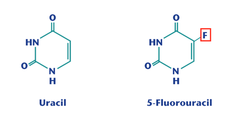
5-Flurouracil

answer
*5-FU: Pyrimidine Analog* -5-FU converted to flouro-deoxyuridine monophosphate (FdUMP) -FdUMP competes with dUMP for *Thymidylate Synthase (TS)* -No role for fluorine in mammalian biology >INHIBITS TS -dUMP generally uses TS + Folate to produce dTMP -5F-dUMP will inhibit the TS so that dUMP will NOT convert to dTMP-> No thymidine produced
question
5-FU (Secondary mechanism)
answer
-*5F-UMP INCORPORATES into RNA* -Acts as *false pyrimidine* -INHIBITS transcription
question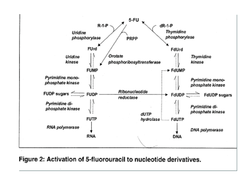
PRPP

answer
*Phosphoribosyl pyrophosphate* -*Needed to secondarily ACTIVATE 5-FU* -*Needed to synthesize purines* -*Inhibited by allopurinol*-> No PRPP then 5-FU has no action -Pentosephosphate: Acts as a co-factor -Formed from ribose 5-phosphate by ribose-phosphate diphosphokinase -Transfers phospho-ribose groups in several reactions
question
Flucytosine
answer
Antifungal agent (5-Fluorocytosine) -Fluorinated pyrmidine analog -Bioactivated to 5-FdUMP-> inhibits TS in fungal cells *Similar activity of 5-FU in mammalian cells but affect fungals-> not as toxic*
question
5-FU (Resistances)
answer
-INCREASED expression of TS >Gene amplification -REDUCED drug sensitivity of enzyme (TS) >Mutation -DECREASED activation of 5-FU >Decreased activating enzymes (mutation or under-expression) or decreased PRPP secondary to allopurinol (minor role)
question
5-FU (Uses)
answer
*Colorectal Cancer* -ENHANCED by addition of reduced folate (folinic acid). >Folate increases the conversion of the apoenzyme to the active enzyme. >The active enzyme incorporates flourinated pyrimidine more efficiently. >This complex of TS, fluorinated pyrimidine, and reduced folate is called a "*ternary complex*" *Breast cancer* -Component of first effective adjuvant therapy (CMF-> Cyclophosphamide, MTX, and 5-FU) *Other GI malignancies*
question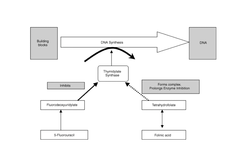
5-FU and Folic Acid

answer
-Folic Acid + TS + dUMP-> dTMP -Folic acid + TS + FdUMP-> TREATMENT WORKS WITH THIS COMBINATION (prevents production of dTMP)-> Prolongs enzyme inhibition *5-FU + Folinic acid INCREASES probability of survival*
question
Folinic Acid (Review)
answer
RESCUES normal tissue from toxicity of *methotrexate (MTX)* -Decreases toxicity by delivery of excess reduced folate bypassing MTX -INCREASES activity of 5-FU >INCREASES toxicity/activity by enhancing inhibition of TS in presence of flourine atom
question
5-FU toxicity
answer
1.) Mainly GI (*Mucositis*) 2.) Myelosupression 3.) Skin-sun sensitivity >Venous discolaration (brownish color by veins) "Hot coffee"
question
Other Pyrimidine analogs
answer
-Capecitabine (Xeloda) -Cytosine arabinoside (ara-C) -Gemcitabine -Azacitidine -Zalcitabine -abine drugs
question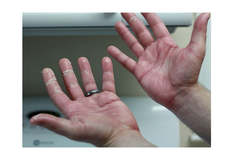
Capecitabine (Xeloda)

answer
1. Prodrug 2. Converted to 5-FU in liver then to active drug in liver and tumor tissue 3. Only used ORALLY 4. Action *mimics 5-FU infusion* 5. Toxicity is primarily *"hand/foot" syndrome* > Secondary to gravity dependence and/or drug induced vasospasm >More chance of an infection due to blistering-> must keep hands clean/avoid exposure 6.) Low dose given over long period of time= increased area under the curve (AUC) >Prolonged drug exposure-> delayed toxicity
question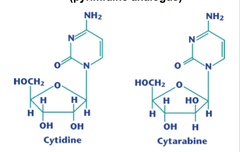
Cytarabine (ara-C)

answer
Arabinose sugar is substituted for deoxyribose sugar (both pentose sugars) *Pyrimidine analog-> similar to cytosine*
question
Ara-C (Mechanism)
answer
1.) Incorporated into DNA 2.) Inhibits DNA polymerase 3.) Inhibits DNA elongation *Incorporates into DNA-> Inhibits DNA polymerase-> terminates DNA chain elongation*
question
ARA-C (Resistance)
answer
-OVEREXPRESSION of DNA polymerase >Gene amplification -*Increased activity of cytidine deaminase*: INACTIVATES the drug >Gene amplification -Decreased activity of deoxycytidine kinase (activates drug) >MUTATION -DECREASED affinity of DNA polymerase for ARA-C >MUTATION
question
ARA-C (Uses)
answer
*Used for AML* -Opposite to alkylators which can cause this
question
ARA-C (Toxicity)
answer
-SEVERE BM suppression -GI mucositis -Unusual neuro toxicity: Cerebellar dysfunction
question
Gemcitabine
answer
-Cytosine analogue (H replaced by F) -Structural similarities to ARA-C but also INHIBITS *ribonucleotide reductase (RR)* -Anti-tumor activities against a variety of tumors (helps improve quality of life) -Key drug in treatment of *pancreatic cancer* -Pulmonary toxicity
question
Zalcitabine
answer
*2,3 dideoxycytidine* -*REVERSE transcriptase inhibitor* -Also inhibits *viral DNA polymerase*
question
Azacitidine
answer
*5-azacitidine (Vidaza)* -INHIBITS DNA methyltransferase causing *hypomethylation of DNA* leading to cell death= epigenetic effect -Major role is in MDS (myelodysplastic syndrome). >However, in some tumor models, hypomethylation is carcinogenic.
question
Purines
answer
*Adenine and Guanine* -a purine is a fusion of a pyrimidine ring and imidazole ring
question
Purine analogs
answer
-6-mercaptopurine (6-MP) -6-thioguanine (6-TG) -Azathioprine (Imuran) -Fludarabine -Cladribine -Allopurinol
question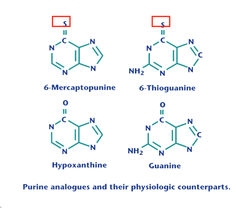
Purine Analog (6-MP and 6-TG)

answer
Major source of purines for formation of DNA is recycled purine derivatives (ex: Hypoxanthine) -Enzyme required is *HGPRT* (hypoxanthine-guanine phosphoribosyl transferase) >The enzyme PRPP synthetase is also required. -*6-MP and 6-TG* are also excellent substrates for *HGPRT blocking* access to this enzyme by required recycled purines -6-MP and 6-TG converted in single step to 6-thioguanosine-5-monophosphate (6-thio GMP) and 6-thioinosine-5-monophosphate (T-IMP): these are fraudulent purines and accumulation leads to "pseudofeedback inhibition" of PRPP and HGPRT *DNA synthesis inhibited* Note: Inosine is formed when hypoxanthine is attached to a ribose sugar
question
6-MP and 6-TG (Properties)
answer
*Cell cycle specifics* 1.) Metabolized to fraudulent deoxynucleotides 2.) Incorporated into DNA inhibiting FURTHER synthesis 3.) ACTIVE during DNA synthesis
question
6-MP and 6-TG (Resistance)
answer
1.) decreased affinity for the activating enzyme HGPRT (hypoxanthine-guanine phosphoribosyl transferase) >Mutation of HGPRT 2.) . Increased drug degradation >Gene amplification via *Xanthine oxidase*
question
6-MP and 6-TG (Uses)
answer
-Leukemia -6-MP also used for Inflammatory bowel disease (Ulcerative colitis/Crohn's disease)
question
6-MP and 6-TG (Toxicity)
answer
-Myelosuppression -Mucositis -Diarrhea -Nausea/vomiting
question
Allopurinol
answer
-INHIBITS *xanthine oxidase and PRPP* -DECREASES circulating uric acid and xanthine: a precursor of purine synthesis -Xanthine oxidase also required to metabolize 6-MP and 6-TG ;Leads to LONGER drug exposure -INHIBITS de novo purine synthesis by INHIBITING PRPP
question
Allopurinol (Uses)
answer
-Cytotoxic chemo causes BREAKDOWN of cells often leading to elevation in uric acid -To prevent GOUT, allopurinol often used ;Prevents hyperuricemia -Leads to enhanced cytotoxic effect of purine analogues: must decrease dose *INHIBITS XO and PRPP*
question
Allopurinol decreases the activity of...
answer
*5-FU* -INHIBITS PRPP which is needed for secondary conversion of 5-FU to 5-FdUMP
question
Allopurinol increases the activity of...
answer
INCREASES activity of purine analog-increased toxicity -INHIBITS xanthine oxidase needed to metabolize 6-MP and 6-TG to inactive metabolites -INHIBITS PRPP needed for de novo purine synthesis ;REMEMBER: PRPP is needed for purine synthesis -;Needed to activate 5-FU -;Inhibited by allopurinol
question
Allopurinol causes...
answer
-Causes INCREASED purine accumulation -Causes feedback INHIBITION of *amidophosphoribosyl transferase (Atase)* ;NEEDED to convert PRPP to phosphoribosylamine ;Rate limiting enzyme in purine synthesis
question
Lesch-Nyhan Syndrome
answer
*HGPRT deficiency* -INCREASED PRPP leads to INCREASED purine synthesis utilizing excess PRPP -Increased uric acid Findings -Gout -Intellectual disability -Self mutilating behavior -X-linked recessive
question
Fludarabine
answer
*2-flouroadenosine with arabinose* -Adenosine analog -Activity in LOW GRADE lymphoma
question
Cladribine
answer
*2-chlorodeoxyadenosine* -Adenosine analogue (2CDA) -INHIBITS adenosine deaminase -May be curative in Hairy Cell Leukemia
question
Hydroxyurea
answer
*Hydroxycarbamide: anti-metabolite* 1.) Analogue of urea 2.) Inhibits *ribonucleotide reductase* (needed to convert ribonucleotides to deoxyribonucleotides-; similar to Gemcitabine) 3.) Inhibits DNA synthesis 4.) Active in CML 5.) Resistance due to mutation or over-expression of ribonucleotide reductase 6.) toxicity: Myelosuppression, N;V, diarrhea USEFUL in Rx of Sickle cell Disease-; Increases HbF
question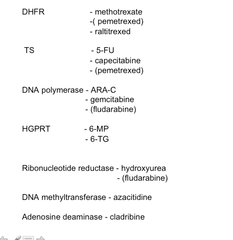
Summary targets of antimetabolites

answer
Overall are CELL CYCLE SPECIFIC -Toxicity usually myelosupression and GI -Increased activity= increased toxicity
question
What are naturally occurring agents?
answer
Active agents found in nature that INHIBIT cell replication and require minimal (if any) synthetic modification. -Most often derived from fungi (antibiotics) or plants (plant alkaloids)
question
Antibiotics
answer
Various strains of soil fungus (streptomyces, etc) 1.) Anthracyclines (-rubicins) ;Doxorubicin ;Daunorubicin ;Idarubicin ;Epirubicin 2.) Anthracenedione: Can cause cardiac problems ;Mitoxantrone: Alopecia 3.) Dactinomycin 4.) Mitomycin 5.) Bleomycin
question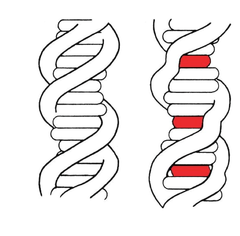
Doxorubicin

answer
*Adriamycin* 1.) INTERCALATES between base pairs BLOCKING DNA and RNA synthesis ;Insertes in backbone-; causes unwinding-; improper replication 2.) INHIBITS *topoisomerase-2 causing DNA strand breakage* ;Enzyme normally unwinds DNA to be read 3.) GENERATES *oxygen and hydroxyl free radicals* causing DNA strand breaks and cell membrane damage
question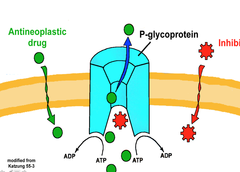
Anthracyclines and naturally occurring agents: Resistances

answer
*Multi-drug resistance (MDR)* mediated by membrane associated P-glycoprotein: An ATP- dependent drug EFFLUX pump -P-glycoprotein sometimes called permeability glycoprotien -Gene amplification -Predominantly overexpressed in epithelium, endothelium, and BBB as opposed to lymphatic tissue
question
Anthracyclines (Use)
answer
-*Doxorubicin*: ;NHL (CHOP) ;Breast cancer (AC, FAC) ;Sarcomas ;Some role in most other tumors -*Daunorubicin* ;mainly AML (Like ARA-C) -*Idarubicin* ;Mainly hematologic malignancies -Epirubicin ;Same indications as doxorubicin
question
Anthracycline (Toxicity)
answer
1. HEART 2. bone marrow suppression 3.) *Alopecia* (baldness)/ Hair may change texture (curly, etc) 4.) Severe nausea and vomiting 5.) Secondary malignancies
question
Anthracycline (Heart Toxicity)
answer
-*CARDIAC*: Free radical generated has affinity for cardiac muscle ;Results in a dose-dependent *cardiomyopathy* ;Worse with HTN or other after-load stress ;Aggravated by radiation ;Synergistic with other drugs-; Herceptin (trastuzumab) ;May be prevented or reduced with *cardioprotectant drugs* -;*Dexrazoxane (Zinecard)* -;An iron chelating agent preventing the formation of anthracycline-generated free radicals
question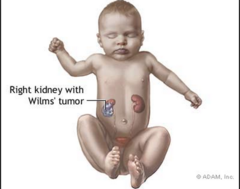
Dactinomycin

answer
Actinomycin D Mechanism of action: -Intercalation -Binds at transcription initiation complex INHIBITING RNA elongation by RNA polymerase Activity: Mainly pediatric tumors especially *Wilm's tumor* Toxicity: myelosuppression and severe vesicant (blistering) GOLD COLOR
question
Mitomycin-C
answer
Mechanism of action: -Acts somewhat like an *alkylator* causing potent CROSS LINKING -May have preferential activity in HYPOXIC conditions Mechanism of resistance: -MDR (p-glycoprotein mediated) Activity: -Main current use is in Rx of anal cancer along with 5-FU and radiation to help spare anal function -May also be used for intra-vesical Rx of superficial bladder cancer (unlike cyclophosphamide/ifosfamide) Toxicity: -Associated with *TTP (thrombotic thrombocytopenic purpura)* >Microangiopathic >Neurological >Kidney failure >Thrombocytopenia -Often fatal PURPLE COLOR
question
Bleomycin
answer
*G2 Drug* Mechanism of action: -INTERCALATES DNA -Produces *single strand and double strand breaks* -ONLY drug with *predominantly activity in G2 disrupting synthesis of components needed for mitosis* Mechanism of resistance: -MDR (p-glycoprotein mediated) Activity: -Testicular cancer -Hodgkin's disease (ABVD) -NHL -MINOR activity in a number of other tumors -Useful as pleurodesing agent Toxicity: -Free radical produced directly *toxic to lung*; can cause pulmonary fibrosis (Lance Armstrong refused) -MUST monitor PFT's -May cause acute anaphylactic reaction: Test dose often given -Skin toxicity
question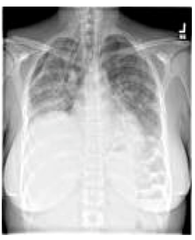
Bleomycin side effect (x-ray)

answer
-Lung Fibrosis -Cardiomegaly -Pneumothorax
question
Plant alkaloids
answer
*Vinca alkaloids* derived from periwinkle plant (-ine) -Vincristine -Vinblastine -Vindesine -Vinorelbine *Taxanes* are alkaloid esters derived from Yew tree (-TAXEL/-AXANE) -Paclitaxel -Docetaxel -Abraxane -Cabazitaxel *Podophyllotoxin* derived from the Mandrake plant (Harry Potter!!!) (-POSIDE) -Etoposide -Teniposide 4. *Quinoline alkaloids* from the Camptotheca acuminata (Happy Tree) -TECAN -Irinotecan -Topotecan
question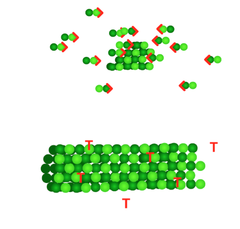
Splindle inhibitors

answer
Vinca Alkaloids -Vinblastine, Vincristine, Vindesine, Vinorelbine TAXANES -Paclitaxel (Taxol) -Docetaxel (Taxotere) CELL CYCLE SPECIFICS
question
Vinca Alkaloids (Mechanism)
answer
-Bind to microtubular protein (tubulin) -Cause DEpolymerization of microtubules -PREVENTS spindle formation-> Leads to *mitotic arrest* RESISTANCE: MDR (p-glycoprotein mediated) ------ -Vincristine -Vinblastine -Vindesine -Vinorelbine
question
Vinca Alkaloids (Toxicity)
answer
DOSE DEPENDENT!!! -Tubulin has similarities to *myelin* >As a consequence *peripheral neuropathy* occurs >Sensory neuropathy (reversible) >Motor neuropathy (irreversible) ->Much more serious condition Ex.) Can't walk well with morning, vision problems, etc *LESS MYELOSUPPRESSIVE*
question
Vinca alkaloids (Therapeutic uses)
answer
-Hodgkin's disease -NHL -Lung cancer -Gliomas -Breast cancer
question
Taxanes
answer
*Paclitaxel*: Derived from bark of Pacific Yew -Kills tree *Docetaxel*: From needles of Pacific Yew -Tree survives Abraxane-nab paclitaxel -Nano particle albumin bound -Less toxicity Cabazitaxel: PARTIALLY synthesized -NOT INHIBITED by MDR
question
Taxanes (Mechanism of action)
answer
-Binds to tubulin -ENHANCES tubulin polymerization (opposite of Vinca Alkoids) -PREVENTS *spindle disassociation* causing mitotic arrest -Resistance: MDR but NOT for *Cabazitaxel*
question
Taxanes (Use)
answer
-Original indication for ovarian cancer (paclitaxel) -VERY active in breast cancer -ACTIVE in lung cancer
question
Taxane (toxicity)
answer
-Bone marrow -Allergies -Myalgias and arthralgias -Neurologic (Neuropathy) >Sensory (reversible): CN VIII, etc >Motor (irreversible) -Skin: Particularly nails (*Multiple Beau's Lines*) -Use of STEROIDS to prevent acute toxicity is critical -ALOPECIA
question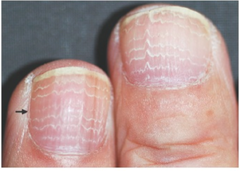
Taxanes on nails

answer
*Beau's Lines* -Affects the growth plate -Multiple white lines seen on nails -One line represents a cycle of chemotherapy
question
Podophyllotoxins

answer
Extract of Mandrake plant: nightshade family -Used as folk remedy by American natives for emetic, cathartic, and antihelmintic -Mentioned in Harry Potter and Bible *Inhibits Topoisomerase II*
question
Podophyllotoxins (Mechanism)
answer
-INHIBITS *DNA topoisomerase-2* and tubulin polymerization -Topoisomerase enzymes allow breakage of both DNA strands, unwinding of DNA, and reannealing of the strands -INHIBITS DNA and RNA synthesis CELL CYCLE SPECIFIC
question
Podophyllotoxins (Uses)
answer
-Testicular cancer -Lung cancer (especially small cell) -NHL -Minor activity in a variety of cancers *Unusual toxicity: UNPREDICTABLE HYPOTENSION* >Myelosupression
question
Camptothecins
answer
*Quinoline alkaloids* from the Camptotheca acuminata (Happy Tree derived from China generally used as a purgative) - -Irinotecan -Topotecan TECAN *Inhibit Topoisomerase 1*
question
Camptothecins (Mechanism)
answer
-*INHIBITS topoisomerase 1* -Leads to ARREST of DNA replication and ultimately cell death -EXTREME GI TOXICITY
question
Irinotecan
answer
-Primarily used in metastatic colon cancer -Causes EXCESSIVE diarrhea requiring use of anti-motility agents -Also has unique acute cholinergic side effect requiring use of *atropine* >Sudden salivation,tearing, urge to defecate, bradycardia
question
Topotecan
answer
-Primarily used in SMALL cell lung cancer and ovarian cancer -Main toxicity is *myelosuppression*
question
Camptothecins (Resistance)
answer
-NOT MDR mediated -Change in Topoisomerase 1 structure (mutations) -Mechanism causing DECREASED accumulation
question
Major Toxicities of naturally occurring products
answer
Antibiotics -Anthracyclines= Cardiac -Anthracenediones= Cardiac -Dactinomycin = Myelosuppression -Mitomycin = TTP -Bleomycin= Pulmonary Plant alkaloids -Vinca= Neurologic -Taxanes= Neurologic -Podophyllotoxins= Myelosuppression -Camptothecins= Gastrointestinal
question
Naturally occurring antibiotics (summary)
answer
-Work better in cycling cells but not strictly cell cell cycle specific (intercalation) *except Bleomycin= G2* -Specific toxicities mainly related to free radical intermediate
question
Naturally occurring plant alkaloids (summary)
answer
-Vincas and taxanes cell cycle specific (mitosis), *neurotoxic*, and broad range of activity -Podophyllotoxins inhibit topoisomerase-2 activity, cell cycle specific -Camptothecins have topoisomerase-*1* activity, EXTREME GI toxicity (cholinergic side effect)
question
Miscellaneous agents
answer
-Agents not falling exactly into one of the other major families of chemotherapy. -All have some but not all properties of one of the major families.
question
General properties of heavy metals (miscellaneous agents)
answer
*Cisplatinum, Carboplatinum and Oxaliplatinum* 1.) Heavy metals 2.) Can mold into shapes 3.) Act as alkylators 4.) Common toxicity is *neurologic* (stays forever in body) 5.) Other toxicities: -Nephrotoxicity: cisplatinum -Myelosuppression: Carboplatinum -Cold intolerance: Oxaliplatinum
question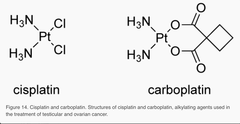
Cisplatin (Platinol) and Carboplatin (Paraplatin)

answer
*Platinum Complex* -Inserts in locations other drugs cannot -TOXIC effects
question
Platinum Resistance
answer
-Increased cellular efflux (*MDR*) -Increased production of intracellular thiol (Glutathione) -Increased DNA repair enzymes *Platinum profoundly most active as FIRST line drug!*
question
Platinum (Mechanism)
answer
-Causes necrosis or apoptosis of cells of proximal tubule (PCT) leading to *wasting of magnesium and potassium* -Without injury Magnesium and Potassium usually handled by distal tubule
question
Cisplatinum
answer
-Curative for most *germ cell tumors* -significant activity: >Lung cancer >Ovarian cancer >Unknown primary Side effect: Nephrotoxicity
question
Carbplatinum
answer
-Same spectrum of activity as cisplatinum but *LESS nephrotoxicity and MORE myelosuppression* -Used in breast cancer, ovarian cancer, and lung cancer Side effect: MYELOSUPRESSION
question
Oxaliplatinum
answer
Unique activity in colon cancer *Side effect: cold intolerance*
question
Platinum Toxicity: Prevention of Nephrotoxicity
answer
-INCREASE both parenteral and oral hydration -Use volume expanders such as Mannitol to force diuresis -REPLACE both potassium and magnesium -*USE of Amifostine* >Thiophosphate *cytoprotective agent* SCAVENGES reactive cisplatin metabolites in normal tissue
question
Platinum Toxicity: Prevention of Neurotoxicity
answer
-some protective effect of calcium and magnesium INFUSIONS (recently refuted) -Cold induced neuropathy can be prevented by AVOIDANXCE of cold air and drink
question
L-asparaginase
answer
*Naturally occurring enzyme* -Guinea pig serum -Mechanism of action: tumor cells, particularly malignant lymphocytes (as opposed to normal cells) have relatively low levels of asparagine synthetase and L-aspaginase hydrolyses circulating asparagine >This leads to LESS availability of asparagine for tumor cells thereby *INHIBITING tumor protein synthesis and cell proliferation.* -Non-malignant cells are relatively protected *Activity mainly for pediatric ALL*
question
Arsenic Trioxide
answer
-Derived from arsenic and a "metalloid" -Combined with *all-trans retinoic acid for treatment of acute promyelocytic leukemia (APL)* -Historically used in traditional Chinese medicine -Mechanism of action uncertain-> Induces apoptosis -Toxicity: interrupts ATP production leading to multi system failure
question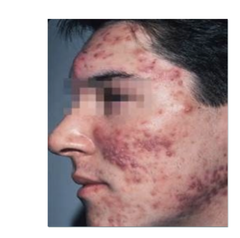
All-Trans Retenoic Acid

answer
-Classified as a retinoid -Promotes cell differentiation leading to APOPTOSIS -Indication: APL Toxicity: headache, fever, dry skin, flu like symptoms, and infections
question
Bortezomib
answer
*From BORON (metalloid)* *Proteosome Inhibitor* -Cytoplasmic protease complex required to degrade unneeded proteins-> Inhibited by * bortezomib (Velcade)* USED FOR -Multiple myeloma (MM) -Mantle cell lymphoma (MCL)
question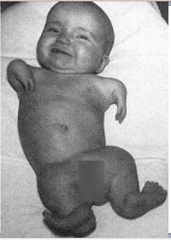
Thalidomide

answer
*Derived from Glutamic Acid* -Sedative introduced in the 1950's -Horrendous birth defects -Found later to inhibit angiogenesis by interrupting processes mediated by *VEGF* -Reintroduced along with its analogue, lenalidomide, for Rx of *multiple myeloma*
question
Lenalidomide: Mechanism of action
answer
Took over Thalidomide 1. Anti-angiogenesis (Inhibit VEGF) ;Extends life 2. decreases BM stromal cell support 3. anti-Osteoclastic 4. immunomodulatory activity VERY EXPENSIVE Multiple Myeloma
question
Miscellaneous agents (Summary)
answer
Platinum -Alkylating function, CCNS -Severe nephro and neurotoxicities; cold intolerance L-asparaginase -INHIBITS protein synthesis -Arsenic trioxide / All trans retinoic acid ;INDUCES apoptosis in certain leukemia (APL) Bortezomid -INHIBITS proteosome (Velcade) Thalidomide/Lenalidomide: Inhibits angiogenesis
question
Families of chemotherapy
answer
Alkylating agents -Nitrogen mustard derived ;Chlorambucil ;Melphalan ;Cyclophosphamide ;Ifosfamide ;Bendamustine Nitrosureas (-mustines) -BCNU -CCNU -mCCNU -Streptozocin Other alkylators -Busulfan -Thiotepa -Procarbazine -Dacarbazine -Temozolamide Antimetabolites (culprit for mucositis) -Methotrexate -Pemetrexed -5-FU -Capecitabine -ARA-C -Gemcitabine -Azacitidine -6-TG -6-MP -Hydroxyurea Naturally occurring compounds -Fungal derived (antibiotic) ;Anthracyclines ;Anthracenediones ;Actinomycin-D ;Bleomycin ;Mitomycin-c -Plant derived ;Vinca alkaloids ;Taxanes ;Podophyllotoxins ;Camptothecins Miscellaneous agents -Platinum derived -l-asparaginase -Arsenic troxide -All trans retinoic acid -Bortezomid -Thalidomide/Lenalidomide
question
Targeted Therapy
answer
A type of medication that blocks the growth of cancer cells by interfering with *specific targeted molecules needed for carcinogenesis and growth*: Often overexpressed or mutated in cancer cells -RATHER than by simply interfering with rapidly dividing cells such as using chemotherapy -Theoretically more specific and less toxic than traditional chemotherapy -The target is often measurable ;Ex: HER-2/neu
question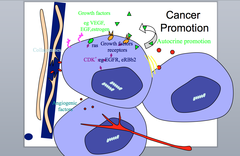
Cancer Promotion (Examples)

answer
-GFs: VEGF, EGF, Estrogen -Collagenases -GF re ceptors: ras, EGFR, eRBb2 -CDKs -Autocrine promotion -Angiogenic factors
question
Classes of targeted therapy
answer
-Anti-hormonal therapy ;Including corticosteroids -Monoclonal antibodies -Signal transduction inhibitors -Linker therapy
question
Anti-hormonal therapy
answer
*Anti-estrogens* -Primarily useful in Rx of breast cancer ;Estrogen receptor is more sensitive post-menopausal due to less circulating estrogen *Anti-androgens* -Primarily useful in Rx of prostate cancer
question
Tamoxifen
answer
-Relatively INEFFECTIVE -Took over oopherectomy (removal of fallopian tubes and ovaries) -Blocked estrogen receptor in breast *not endometrium* -Effective in treatment of breast cancer but serious side effects -More effective on post-menopausal women ;Use for pre and post menopausal women
question
Tamoxifen (Mechanism of action)
answer
*Selective estrogen-receptor modulator= SERM* -A WEAK estrogen that works by BLOCKING estrogen receptor (ER) in breast cancer cells -Acts like ANTI-estrogen in breast Delivery: Taken orally daily Prevent G1
question
Tamoxifen (Toxicity)
answer
-Thromboembolic disease (clots): Estrogen effect -*Endometrial cancer*: Estrogen effect -HOT FLUSHES due to anti-estrogen effect -Retinopathy
question
Tamoxifen (Analogs)
answer
-*Raloxifene*: SERM that helps treat osteoporosis ;Not first line for breast cancer, despite blocking ER for breast cancer and NOT causing endometrial cancer. -Faslodex: IRREVERSIBLE blockade of ER *Thromboemoblism can still occur due to estrogen effect*
question
Resistance to Tamoxifen
answer
ER= Estrogen Receptor -Change in expression of ER: At the gene level -Mutation of ER: Cannot bind as efficiently -Selection of ER NEGATIVE cells: survival advantage
question
Roloxifen vs. Tamoxifen
answer
*Roloxifen* acts similarly to Tamoxifen (but with less endometrial cancer) but clinical trials were exclusively for *osteoporosis* and cancer prevention NOT treatment for breast cancer ;NO indication for breast cancer treatment -BOTH drugs: Anti-hormonal agent INHIBIT cell cycling (G1) allowing cells to go thru apoptosis
question
Aromatase Inhibitors
answer
*Aromatase inhibitor: INHIBIT transformation of androstenedione to estrone and testosterone to estradiol* -Used for metastatic breast cancer -ONLY for post-menopausal women ;If used premenopausally-; INCREASED LH ; FSH-; HYPERSTIMULATION of ovary-; can be used to INDUCE ovulation *Aminoglutethimide; Anastrozole, Letrozole, Exemestane (ALE)*
question
Aminoglutethimide
answer
*Aromatase inhibitor* VERY TOXIC -COMPLETELY block estrogen synthesis -Requires concurrent steroid -NO longer used
question
Third generation Aromatase Inhibitors
answer
ALE *Aminoglutethimide; Anastrozole, Letrozole, Exemestane* Toxicity due to *estrogen withdrawal* -Osteoporosis: Can give vitamin D to help -HOT FLUSHES -Arthralgias -Walking can help alleviate symptoms *Post menopausal women only*
question
Aromatase Inhibitors: Premenopause
answer
-DECREASES estrogen production by ovary -INCREASES LH , FSH release by pituitary -INCREASES attempt at estrogen production by ovary= *hyperstimulation* -Leads to development of CYSTIC ovaries and ultimately does NOT STOP ovarian estrogen production *DUE to hyperstimulation-; can be used to INDUCE ovulation*
question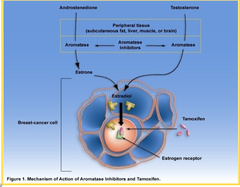
Tamoxifen vs. Aromatase Inhibitors (Mechanism diagram)

answer
Tamoxifen: BLOCKS the estrogen receptor and can be used in both the pre- and post- menopausal settings. -Antiestrogen effect on the breast but estrogen effect on the uterus (endometrial cancer as a side effect) Aromatase Inhibitors (Aminoglutethimide; Anastrozole, Letrozole, Exemestane): EXCLUSIVELY used for POST-menopausal setting when the adrenal gland is the major source of estrogen precursors
question
Progestins
answer
DECREASES activity of estrogen receptor= *Down regulation* -*Megestrol acetate* -*Medroxyprogesterone* Side effects: Hirsutism, acne, abnormal lipid (LDL rises= weight gain), hyperventilation, and elevated glucose levels
question
LHRH/GnRH Analogs
answer
DECREASES pituitary release of LH and FSH resulting in DECREASED estrogen synthesis by ovary -Leuprolide -Nafarelin -Goserilin -INDUCES MENOPAUSE -Decrease pituitary release of both LH and FSH due to down regulation ;Flare effect first 10 days: Use GnRH antagonist (Ganirelix, Cetrorelix, Abraelix to prevent) *Breast and prostate cancer*
question
Androgen Receptor Blockers
answer
Agents: -Flutamide (Euflex) -Bicalutamide (Casodex) -Enzalutamide (Xtandi) Delivery: Oral and daily Toxicity: -Hot Flushes -Impotence -Andropause (Drop in testosterone) -Hepatotoxicity -Gynecomastia *Resistance similar to tamoxifen*
question
Pituitary Inhibition
answer
*GnRH/LHRH analogs* Leuprolide, Nafarelin, and Goserilin Mechanism of action: Paradoxically DECREASE pituitary release of both LH and FSH (after INITIAL INCREASE) due to receptor down regulation -Results in DECREASED estrogen and testosterone production -Active in both prostate cancer and breast cancer ;More commonly used in PROSTATE cancer -Toxicity: Transient "flare" effect (lasts approximately 10 days) -Impotence
question
Abiraterone
answer
*Zytiga* -Must use with steroids -DECREASES both *androgen and corticosteroid production* by INHIBITING *17- alpha hydroxylase*
question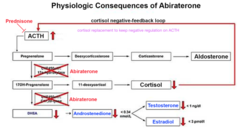
Abiraterone (Mechanism)

answer
*17 Alpha hydroxylase inhibitor* ADT (Androgen deprivation therapy) such as treatment with LHRH therapy or orchiectomy (removal of testicles), suppresses testicular androgen production but DO NOT affect androgen production by the adrenals or inprostatic tumor tissue *Abiraterone acetate* INHIBITS the *CYP17 enzyme complex* that is required for testosterone biosynthesis in testes, adrenal, and prostatic tumor tissue ;NO DHEA and androstenedione which are androgens and the precursors of testosterone -Does not suppress hypothalamus/pituitary/gonadal stimulation= ACTH rises! ;Mineralcorticoids are continuously produced-; High Salt/Fluid retention= cause hypokalemia and HTN
question
Abiraterone must be used with ________ to prevent ACTH production?
answer
*Concurrent corticosteroids to prevent ACTH production*
question
Corticosteroids (Mechanism of action)
answer
UNKNOWN! -Malignant lymphocytes have steroid receptor that when activated can result in LYSIS of lymphocytes possibly by *inducing APOPTOSIS*
question
Corticosteroids (Activity)
answer
*Primarily Hodgkins and NHL* -Major role in *supportive care* -Anti-nauseant -Appetite stimulant -DECREASES cerebral edema -CO-analgesic
question
Corticosteroids (Toxicity)
answer
-Fluid retention-; Aldosterone -Glucose intolerance-; Cortisol -Proximal myopathy/neuropathy -Insomnia -Immunosuppression: Anti-inflammatory -INCREASED appetite -Skin changes -STRESS ulcers
question
What drugs cause proximal myopathy/neuropathy?
answer
-Corticosteroids -Vinca Alkaloids -Taxols -Platinium -Mitomycin-C
question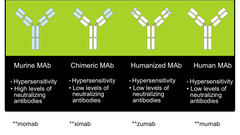
Monoclonal Antibodies (Types)

answer
Drugs end with *mab* Murine MAb: MOMAB -Culprit for *hypersensitivity* ;High levels of NEUTRALIZING antibodies Chimeric MAb: XIMAB -Hypersensitivity ;LOW levels of neutralizing antibodies Humanized MAb: ZUMAB -Hypersensitivity ;LOW levels of neutralizing antibodies Human MAb: MUMAB -Hypersensitivity ;LOWEST/NO levels of neutralizing antibodies
question
Monoclonal antibodies Types
answer
-Make cancer cells more visible to the immune system ;Rituximab ;Nivolumab -BLOCK growth signals ;Cetuximab -STOP new BVs from forming ;Bevacizumab
question
Lymphocyte and bone Receptors
answer
CD20= VEGF PD-1= Nivolumab EGFR= Cetuximab VEGF= Bevacizumab HER2= Trastuzumab/Pertuzumab RANK ligand= Denosumab
question
Rituximab
answer
AKA Rituxan *Make cancer cells more visible to the immune system-; CD20* Target is CD20 found on *B- cell lymphomas* -CD20: Mediates antibody DEPENDENT cellular toxicity and complement dependent cytotoxicity by making *lymphocyte more visible* ;Making it more visible to NK cells CHIMERIC
question
Nivolumab
answer
*Make cancer cells more visible to the immune system-; PD-1 (Checkpoint INHIBITOR)* INCREASES immune response -PD= Programmed cell death ;Expressed on T-cells and B-cells ;Binds 2 ligands= PD-L1 and PD-L2-; Down regulates the immune system-; Promotes SELF tolerance HUMAN (fully)
question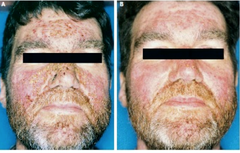
Cetuximab

answer
AKA Erbitux (MARTHA STEWART DRUG) *-BLOCK growth signals-; target EGFR* -Used for Squamous cell head and neck cancer; wild type k-ras colon cancer -Can cause SKIN RASH: indicate the appropriate target has been inhibited-; Acneiform eruption ;Low doses of steroid creams and antibiotics needed CHIMERIC
question
Bevacizumab
answer
AVASTIN *Stop new blood vessels from forming-; Target VEGF* -Antiangiogenic drug helps to prevent BV development-; tumors will diminish in size USED FOR mainly *colon cancer and refractory gliomas* Toxicity: Wound healing HUMANIZED
question
Ipilimumab
answer
YERVOY *Binds to CTLA-4-; Blocks INHIBITORY signal* Used for *metastatic melanoma* (immune sensitive cancers-; DTIC and Vumrafenib used for MM too) CTLA= Cytotoxic T-lymphocyte-associated antigen-4 ;An inhibitory regulator of T-cell immune response ;INHIBITS immune defense against tumor cells ;Ipilimumab will block CTLA-4 = *disinhibiting T-cell activity* HUMAN (Fully)
question
Trastuzumab (Herceptin)/ Pertuzumab (Perjeta)
answer
*Her-2/neu over expression in breast cancer* -Up to 30% of breast cancer OVEREXPRESS HER2 gene -INCREASES both response rate and survival in metastatic breast cancer -INCREASES "cure" in early stage HER positive breast cancer -HER2 may also be over expressed in gastric cancer -First monoclonal Ab associated with improved survival/cure when used adjuvantly in Rx of *epithelial malignancies* -Toxicity= cardiac (DONT use with Doxrubicin/Anthracyclines) ;REVERSIBLE cardiac toxicity HUMANIZED
question
Denosumab
answer
*Binds to RANKL-; Inhibits osteoclastic activity* -MANY cancers go to bone-; stimulate *osteoclast activity* -; Osteoclast makes Receptor Activator of Nuclear Factor kappa (RANK) -*Denosumab* DECREASES bony complications-; improves bone density -Used for postmenopausal women at risk of fracture -Side effects: Hypocalcemia, rash, eczema, dermatitis, INCREASED risk of osteonecrosis in jaw FULLY HUMANIZED
question
Signal transduction inhibitors
answer
Protein Kinase inhibitors: Critical components of signal transduction pathways influencing gene transcription and/or DNA synthesis TARGET -Tyrosine kinase (TKIs): *End in ib* -mTOR: serine/threonine protein kinase -B-RAF: Member of Raf kinase family -MAPK: Mitogen activated protein kinase
question
TKI
answer
*Tyrosine Kinase Inhibitors* -May be associated with a TRANS membrane cell surface receptor -May have NO associated cell surface receptor identified -Prevent phosphorylation End in *ib* CAN CAUSE HYPOTHYROIDISM
question
TKIs (Examples)
answer
-EGFR HER2 domain (ErbB-2): Lapatinib -EGFR NON-Her-2 domain: Gefitinib and Erlotinib -VEGFR: Sunitinib and Sorafinib
question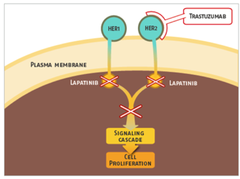
Lapatinib

answer
TKI EGFR Receptor: HER2 domain (ErbB-2) BREAST CANCER USE -Trastuzumab directly binds to HER2, while Lapatinib will block the HER2 domain (Both for breast cancer)
question
Gefitinib/Erlotinib
answer
TKI EGFR NON-Her-2 domain LUNG CANCER USE
question
Sunitinib
answer
TKI VEGFR Renal Cell Carcinoma
question
Sorafinib
answer
TKI VEGFR Hepatoma
question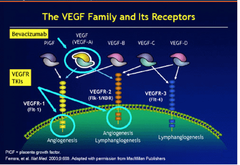
VEGF vs VEGFR blockers

answer
VEGF Blockers= Bevacizumab/Avastin (colon cancer) VEGFR Blockers: -Sunitinib (RCC) -Sorafinib (Hepatoma) ;Both took over IFN but not much much more efficacy
question
Non cell surface receptor associated TKIs
answer
*Imatinib*: -Target: Product of mutated oncogene (*Bcr-Abl oncogene*) *CML and GI stromal tumors* *Nilotinib has similar action*
question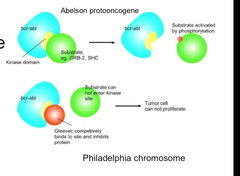
Imatinib (mechanism)

answer
INHIBITS the *tyrosine kinase activity* of the protein product of the *Bcr-Abl oncogene* that is commonly expressed in CML
question
Imatinib (Therapeutic use)
answer
-Chronic Myelogenic Leukemia (CML) ;Bcr-Abl gene -GI stromal tumors (expressing the *c-kit tyrosine kinase*) ;Interstitial cell of CAJAL EFFECTIVE DRUG for CML and GIST *Resistance: Mutation of the Bcr-Abl gene*
question
Imatinib (Toxicity)
answer
-Diarrhea -MYALGIA -Fluid Retention
question
B-Raf Inhibitors
answer
*Vemurafenib/Zelboraf* -INHIBITS mutated *B-raf protein kinase* -INHIBITS RAS pathway -Uses: *metastatic melanoma* (so is Ipilimumab and Dacarbazine (DTIC))
question
Efficacy of vemurafenib in metastatic melanoma
answer
More effective than DTIC (Dacarbazine)
question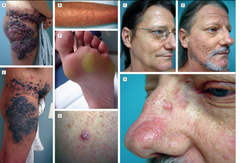
Vemurafenib (Toxicity)

answer
-Arthralgias -Fatigue -Rash (sometimes) -Unusual cutaneous squamous cell carcinoma (SCC)
question
m-TOR inhibitors
answer
-Causes immunosupression -Used to prevent transplant rejection *Sirolimus/Rapamycin; Temsirolimus; Everolimus*
question
Sirolimus
answer
*Rapamycin* INHIBIT tumor growth UNKNOWN mechanism May reverse resistance to anti-hormonal agents (Bolero trial) IMMUNOSUPPRESSIVE -Many analogs made due to this: Temsirolimus; Everolimus
question
Temsirolimus and Everolimus
answer
-ROLIMUS Used for Renal Cell Carcinoma (RCC) -Activa against M-TOR
question
Nomenclature hints
answer
Monoclonal antibodies= -ab TKIs: -ib mTOR inhibitors: -olimus
question
Chemo vs targeted therapy
answer
Chemotherapy -Target is known Ex.) TS (Thymidylate Synthase) and DHFR (MTX) -Usually not measurable -Overexpression/ mutation leads to RESISTANCE -Targets ALL cells -Known TOXICITIES -inexpensive VS Targeted Therapy -Target known Ex.) EGFR (Cetuximab), CD-20 (Rituximab), etc -Usually measurable -Overexpression/mutation often exploitable -Often only targets cancerous cells -Toxicity unpredictable -EXPENSIVE
question
Interferons
answer
Human response to viral infection is to synthesize endogenous glycoproteins that "interfere" with viral replication -Activity demonstrated in melanoma, renal cell carcinoma, hairy cell leukemia (cladribine can be used), T-cell lymphoma, and early stage CML -Toxicity= Predictable ;Extreme flu-like symptoms, myelosuppression, and hepatotoxicity -Major role in cancer RX: adjuvant Rx of high risk melanoma *Hairy cell leukemia and CML*
question
Interleukins
answer
IL-2: Cytokine immune system signaling molecule -Bind to IL-2 receptors on T-lymphocytes -IL-2/IL-2R interaction stimulates growth, differentiation, and survival for cytotoxic T cells NOT really used today due to SHOCKING LUNG
question
TNF
answer
*Tumor necrosis Factor* Can cause apoptosis -Not really used in therapy
question
HPV vaccine
answer
PREVENT CERVICAL CANCER -HPV 6 and 11 cause condyloma accuminata -HPV 16 and 18 cause CERVICAL cancer
question
Resistance to chemotherapy
answer
1.) INCREASED expression of target proteins Ex.) MTX resistance associated with overexpression of DHFR due to gene AMPLIFICATION 2.) INCREASED DNA repair Ex.) Important in RESISTANCE to alkylators and cisplatinum due to gene AMPLIFICATION 3.) Failure of drugs to enter a cell or increased efflux from cell regulated by multidrug resistance gene (*MDR also called p-glycoprotein*) Ex.) Most naturally occurring agents (gene amplification) -; exceptions are *Camptothecins and Cabazitaxel* 4.) Inability of drug to PENETRATE tumor Ex.) LARGE hypoxic tumors such as sarcomas brain tumors (blood brain barrier) 5.) Target protein no longer available Ex.) ER in breast cancer 6.) Target molecule altered Ex.) VEGFR or VEGF mechanism-; gene mutation 7.) Formation of trapping agent Ex.) *Glutathione mechanism*: Reacts with agents such as antibiotics and platinum -Probably gene amplification 8.) DECREASED activation of prodrug or increased metabolism of active drug Ex.) Antimetabolites such as 6-MP, 6-TG, ARA-C, 5-FU ;Mechanism: DECREASED activity of tumor cell enzyme that converts prodrug to active drug or increased inactivating enzyme ;Gene mutation and gene amplification
question
Strategies to prevent resistance
answer
1.) Combination chemotherapy -Different mechanisms of resistance -Different mechanisms of action -Different toxicities Ex.) ABVD, BEP, FAC-TH 2. dose intensity -Exposure of tumor to exceedingly high doses of an agent BEFORE resistance can occur -Seldom has this been successfully employed in epithelial tumors -Main role is in *leukemias and lymphomas* 3. *Agents to REVERSE resistance* -Cellular efflux may be INHIBITED by calcium channel blockers -No clinical role yet -mTOR inhibitors to reverse anti-hormonal resistance (Bolero trial) -Folinic acid (Leucovorin) for 5FU
question
Adjuvant Chemotherapy
answer
-Chemo given IN ADDITION to primary therapy to increase cure rates -Strategy employed in Rx of early stage breast cancer, colon cancer, osteogenic sarcoma -Practical application of Gompertzian growth principles
question
Induction Chemotherapy
answer
-ATTEMPT to "induce" complete RESPONSE in chemo-sensitive tumors -Strategy employed in Rx of most acute leukemias -No other primary therapy available
question
Consolidation and maintenance chemotherapy
answer
-Attempt to "consolidate" an induced response with further HIGH dose chemo and "maintain" a response with further low dose chemo -Strategy most often employed in *acute leukemia*
question
Neoadjuvant chemotherapy
answer
-Chemotherapy given PRIOR TO primary therapy to achieve cyto-reduction to help better facilitate more effective primary therapy such as surgery -Strategy often employed in locally advanced breast and rectal cancer
question
Palliative chemotherapy
answer
-Chemotherapy given with primary goal of *improving quality of life* and secondary goal of extending life -Strategy used in essentially every type of cancer
question
Chemo is initially given after removal of the primary tumor when there is no evidence of residual disease. This type of chemotherapy is called:
answer
1. induction chemo 2. consolidation chemo 3. adjuvant chemo 4. palliative chemo 5. targeted chemo ---- Primary treatment was removal of tumor, so then the chemo is happening AFTER= Adjuvant
question
Toxicity of Chemotherapy (Acute)
answer
-Alopecia: Baldness -Nausea and vomiting -Myelosuppression -Mucositis -Skin changes
question
Alopecia

answer
ACUTE toxicity of chemo -Predictable -Most commonly seen with *anthracyclines, taxanes, and some alkylating agents* -Occurs 3 weeks after first cycle -Hair continues to grow but is BRITTLE ;Frail, fragile, can fall off -When hair regrows often different texture
question
Alopecia (Prevention)
answer
-Cold cap: INEFFECTIVE and may decrease efficacy -Avoid concurrent toxins -Certain drugs like *mitotoxantrone*
question
Nausea and vomiting
answer
ACUTE toxicity of chemo 1.) Worse in YOUNG than elderly 2.) Most commonly seen with platinum, anthracyclines, IV nitrogen mustard derived alkylators 3.) Large psychological component (anticipatory vomiting) 5.) Used to be main cause of prematurely discontinuing chemo
question
Nausea and vomiting (Prevention)
answer
-Light meals -Amnesics: Mild tranquilizers -Multiple drugs
question
Nausea and Vomiting (Active Drugs)
answer
1.) 5HT-3 Antagonist: *Ondansetron* ;Chemo induced nausea and postoperative nausea-; can cause constipation 2.) Anti-histaminics: *Prochlorperazine* 3.) Anti-dopamines: *Metoclopromide* ;Dopamine normally inhibits ACh-; more ACh-; increased LES tone and enhances gastric emptying (also for GERD); can cause parkinsonism and hyperprolactinemia 4.) Minor tranquilizers: *Lorazepam* 5.) Steroids *Dexamethasone* 6.) THC 7.) *Aprepitant (Emend)*: Blocks neurokinin 1(NK1) receptor ;Substance P antagonist that blocks NK1 receptor
question
Myelosuppression
answer
*Acute Toxicity form chemo* 1.) Most important side effect 2.) Biggest cause of Rx related deaths 3.)Predictable to a degree: -White count DECREASES by 7-10 days -Platelets a bit later -RBCs decrease by approximately 1 % per day 4.) often associated with *severe mucositis creating a "perfect storm" for infection*
question
Myelosuppression (Treatment)
answer
1.) Avoid crowds 2.) Washing 3.) Report fever or chills immediately 4.) If low absolute neutrophil count with fever = immediately treat with broad spectrum antibiotics 5.) If fever persists= consider fungal infection 6.) For subsequent cycles consider dose reduction, CSF support, or both
question
CSF Support
answer
*Colony stimulating factors* 1.) Granulocyte colony stimulating factor (or GM CSF ) -Has to be used prophylactically -Decreases infection related hospitalization and death -Causes *bone pain* 2.) Erythropoietin -INCREASES RBC mass (for anemia) -DECREASES blood transfusion requirement -Very important if transfusion unacceptable
question
Prevention of myelosupression
answer
Use proper drugs Ex.) Vincristine-; prevents Hodgkin's, NHL, etc
question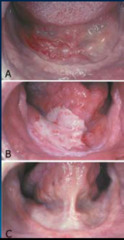
Mucositis

answer
Acute toxicity due to chemo 1.) Most commonly seen with antimetabolites 2.) Usually occurs at time of lowest blood counts 3.) Often painful leading to dysphagia and diarrhea-> results in electrolyte disturbance and malnutrition 4.) Often associated with yeast infection 5.) Major cause of sepsis (neutropenic patients)
question
Mucositis (Treatment)
answer
1.) Intensive mouth care 2.) Pre- dental assessment: Check for cavities, sharp edges, etc. 3.) Maintain good hydration -Rehydration solutions often required 4.) Mouth wash containing local anesthetic, bicarbonate, antifungal and occasionally anti-histamine required 5.) Dose adjustment 6.) Occasionally feeding tube required 7.) Barrier preparation available
question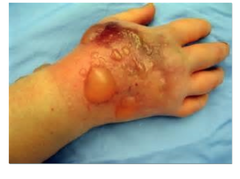
Skin Changes

answer
Acute toxicity due to chemo 1.) Extravasation is biggest concern particularly with IV alkylators, naturally occurring products >Fluid gets outside tissue and accumulates 2.) Antimetabolites can cause *discoloration* but are NOT vesicants >Particularly along the vein 3.) Many agents associated with nail changes particularly taxanes (Beau's Lines) 4.) Disabling "hand-foot" syndrome commonly occurs with infusional chemo and *capecitabine* 5.) *Acneiform rashes* (CETUXIMAB) -Common with many targeted therapies particularly EGFR inhibitors and steroids -May be marker of response
question
Skin changes: Extravasation
answer
Extravasation of alkylating agents or naturally occurring products should be considered an emergency. Immediate action required as follows: 1.) DISCONTINUE infusion 2.) Ice and elevate limb 3.) Liberally use anti-inflammatory agents and anti-histamines 4.) Frequent observation to assess for extension of reaction 5.) Consult plastic surgery IV LEAK-; caution as amputation can occur
question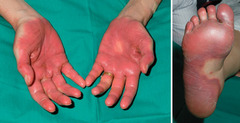
Hand Foot Syndrome

answer
"hand-foot" syndrome -Dose reduction -Skin emollients -Goves -NO GARDENING *Capecitabine side effect*
question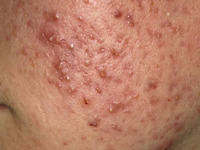
Acneiform Rashes

answer
-Correlate with activity of EGFR inhibitors -Topical antibiotics and steroids *Cetuximab*
question
Oxaliplatin (Toxin)
answer
*Acute toxicity of chemo* Oxaliplatin induced pharyngolaryngeal dysesthesia -Usually transient -Aggravated by cold air or fluids *AVOID COLD as intolerant to it*
question
Irinotecan (Toxin)
answer
*Acute toxicity of chemo* INDUCED acute cholinergic syndrome -Hypersalivation, acute diarrhea, bradycardia, etc *Treat with ATROPINE*
question
Tumor Lysis Syndrome
answer
*Due to cells lysis* -Increase potassium -Decreased calcium -Increased uric acid -Medical emergency *Need IV, electrolytes, and ALLOPURINOL*
question
Pancreatitis (Drugs)
answer
*Acute toxicity of chemo* -L-asparaginase (protein synthesis inhib) -Azathioprine (Inhib DNA methyltransferase) -6-MP (purine analog blocking HGPRT) -Ara-C (Inhibits DNA polymerase) -Other anti-metabolites -cis-platinum -Steroids -Anti-estrogens
question
Sub-acute toxicity
answer
1.) Neurologic Toxicity 2.) cardiac toxicity 3.) nephrotoxicity 4.) pulmonary toxicity 5.) hematologic toxicity 6.) vasculopathy
question
Neurological Toxicity
answer
*MOST COMMONLY SEEN WITH: *vinca alkaloids, taxanes, and platinum* Nature of disability -Sensory: Most common -Usually reversible (except platinum) -Motor: occurs late ;Often IRREVERSIBLE -Autonomic= Unpredictable ;Usually GI=Constipation
question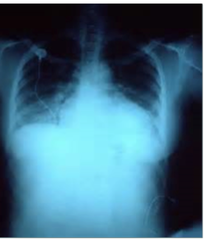
Cardiac Toxicity

answer
*Anthracyclines, 5-FU, and high dose cyclophosphamide* -Anthracycline ;Dose dependent cardiomyopathy;Free-radical mediated ;Require frequent monitoring of cardiac function ;Worse with hypertension or radiation ;May be prevented with cardioprotective agent-; *Dexrazoxane (Zinecard)*; avoid using with Herceptin (trastuzumab) -5-FU ;Unpredictable coronary SPASM ;Also seen with capecitabine -High dose cyclophosphamide ;Unpredictable ;Direct cardiac toxin -Trastuzumab ;Appears to be due to anti-HER2 effect on heart
question
Prevent Cardiac Toxicity
answer
1.) Careful monitoring of dose ;Anthracycline toxicity is dependent on cumulative dose 2.) Baseline and follow-up cardiac ejection fraction monitoring ;If greater than 10% drop from baseline-; may have to DISCONTINUE drug 3.) Avoid concurrent cardiac toxins Ex.) Trastuzumab, radiation, etc. 4. Use of cardioprotective agent (Dexrazoxane (Zinecard))
question
Nephrotoxicity
answer
Most commonly seen with: -Cis-platinum -Mitomycin-c -Cyclophosphamide/Ifosfamide (Nitrogen mustards)
question
Nephrotoxicity (Mechanism)
answer
1.) Cisplatinum -dose dependent -Proximal tubular toxin -Can partially prevent with hydration and *amifostine* -Need to monitor for potassium and magnesium wasting 2.) Mitomycin-c -Can cause TTP with renal failure -Probably free radical mediated -Unpredictable -Often irreversible 3.) Cyclophosphamide and ifosfamide -Acrolein mediated hemorhagic cystitis -May be prevented with *MESNA*
question
Pulmonary Toxicity
answer
*Bleomycin and Gemcitabine* Bleomycin mechanism: -A free radical intermediate that interacts with heme asociated iron in pulmonary interstitium -Toxicity can be acute or cumulative -Patients must be followed with serial pulmonary function tests monitoring for diffusion defects -Lance Almstrong avoided!
question
Delayed hematologic Toxicity
answer
Most commonly seen with: -All alkylators and Mitomycin -Anthracyclines Will have: -Myelodysplasia -Myelofibrosis -Leukemia -TTP Mechanism: -Sub lethal DNA damage -TTP idiopathic , mitomycin-related
question
Vasculopathy
answer
Anti-angiogenesis drugs: VEGF(R) Inhibitors (Bevacizumab, Sunitinib, and Sorafinib) Will cause do to lack of BV growth/devo: -HTN -Protein losing nephropathy -Wound healing compromised
question
Accelerated aging with chemo due to...
answer
*Cancer cells over express Telomerase-; Inhibit enzyme in both cancerous and normal cells-; decreasing telomerase activity= AGING*
question
Pregnancy and chemotherapy
answer
Can use but avoid 1st trimester -Not methotrexate-; can cause abortion ;Avoid antimetabolites
question
Thromboembolic Disease
answer
*Cancer is thrombogenic* -Trousseau's sign of malignancy (blood clot in unusual places-> migratory thromboembolism) -Certain anti-hormonal agents are also thrombogenic especially *tamoxifen* (preventing estrogen development and proper function) -Chemotherapy is less predictable re. thrombosis but vasculopathic drugs include 5-FU and cisplatinum -All patients at HIGH risk
question
Sexual Dysfunction with chemotherapy
answer
-Decreased libido -Anxiety -Depression -Nausea, mucositis, fatigue -Cessation of ovulation and azoospermia (alkylators and topoisomerase inhibitors)
question
Bone health and chemotherapy
answer
Increase osteoporosis: 1.) *Corticosteroids*: Decrease GI Ca+ absorption, increase renal excretion 2.) Aromatase inhibitors ( decrease circulating estrogen) 3.) LHRH agonists/antagonists: DECREASE circulating androgens and estrogen 4.) Most chemo agents to certain degree: Probably hormonal effect
question
Drugs known to cause arthralgia
answer
1.) Aromatase Inhibitors 2.) Adjuvant Chem (especially for breast cancer)
question
Hypothyroidism
answer
-Cancer mimics LOW thyroid -Narcotics mimic LOW thyroid -Depression mimics LOW thyroid -TKI's cause hypothyroidism -Radiotherapy can cause hypothyroidism (sunitinib, etc)
question
Anti-inflammatory
answer
-Same carrier protein as many chemo agents -Increases relative dose of each drug -May cause mucosal disruption aggravating chemo induced *mucositis* -INCREASED bleeding risk
question
Anti-Infectives
answer
-Same carrier protein -INCREASED risk of fungal infections
question
Anti-Gout Medication
answer
-May INHIBIT pro-drug activation *Allopurinol and 5-FU* -May increase drug effect *Colchicine and vincas* *Allopurinol and 6-MP (prevents XO removing 6-MP)*
question
Diuretics
answer
Increase risk of renal dysfunction when *platinum is used* -Loss of potassium and magnesium
question
Anti-Convulsants
answer
Induce hepatic metabolism of of *irinotecan* resulting in decreased efficacy
question
Anti-Coagulant
answer
-Warfarin and 5-FU/ capecitabine/ etoposide (Podophyllotoxin) / carboplatinum/paclitaxel/ gemcitabine -Same carrier protein leading to INCREASED BLEEDING ;Warfarin gets displaced and will remain in body
question
Cytochrome p-450
answer
Catalyzes oxidation of organic substances for drug metabolism and bioactivation -Increase activity: Antiepileptic drugs -Decrease activity: Grapefruit Juice -Unpredictable: St John's Wort



